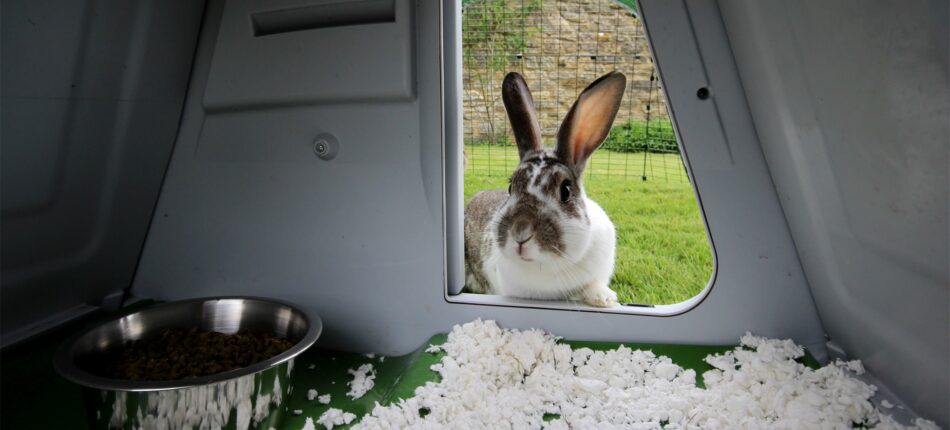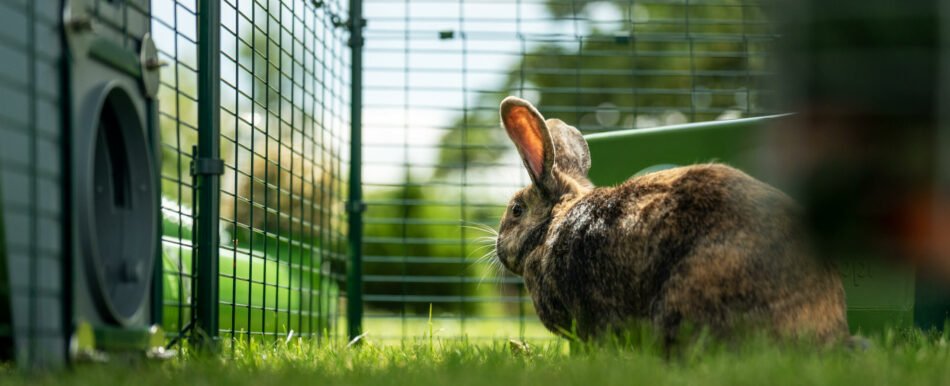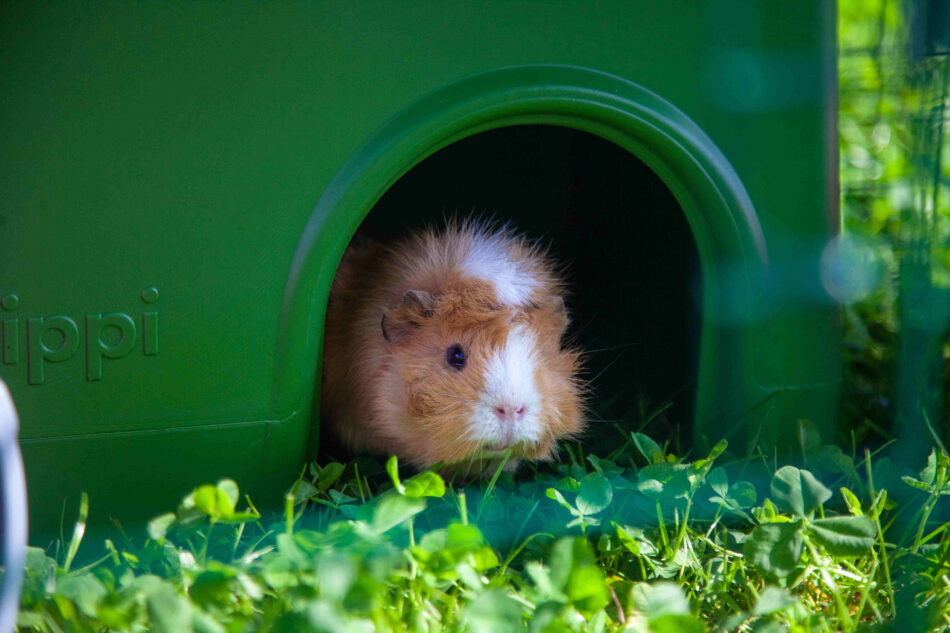How to keep rabbits and guinea pigs warm in winter
When closely monitored and maintained, rabbits and guinea pigs can live outdoors all year round. But many owners wonder how to keep rabbits and guinea pigs warm in winter. As with any extreme temperatures, you should make adjustments to your pets’ setup to help them through the season, but under most circumstances, bunnies and cavies don’t need to be brought indoors. Find out how to keep your rabbits and guinea pigs warm during the winter, how cold may be too cold, and when to consider bringing them inside for the season.
Can my rabbits and guinea pigs live outside year round?
It’s a widely accepted opinion that domesticated rabbits and guinea pigs can’t or shouldn’t be allowed to live outdoors all year round. In actuality, with the right precautions, rabbits and guinea pigs can thrive outside throughout the year. With few exceptions, rabbits and guinea pigs share the same characteristics as their wild counterparts, and are naturally equipped to handle seasonal changes. It’s true that rabbits have cold weather advantages over guinea pigs, as they have larger bodies, fur on their feet, and more dense coats — but cavies can hold their own in cold weather with some tricks up their metaphorical sleeves.
Rabbits and guinea pigs in the wild
It’s important to remember that rabbits and guinea pigs live in the wild without the convenience of central heating or climate controlled conditions. Their coats and natural insulation help keep them warm in the winter. With the exception of Skinny Pigs, most domesticated rabbits and guinea pigs can thrive even in freezing temperatures — just like their cousins in the wild. The secret to success is to get them as close to their natural habitat as possible.
In nature, rabbits dig extensive burrows called warrens. These underground tunnels provide insulation from the elements and create a cosy space to warm up. They’ll huddle together in groups to create more warmth in their own version of climate-controlled homes. And while guinea pigs don’t dig, wild cavies find abandoned burrows or dens dug by other animals to take up residence in. Using the same methods as bunnies, guinea pigs will huddle together for warmth inside of their repurposed burrows.
With these natural behaviours in mind, owners of domesticated rabbits and guinea pigs can simulate this environment for their pets — and in doing so, will equip their bunnies and cavies with the surroundings they need to be supported all year round. If you’re committed to keeping your rabbits and guinea pigs outside throughout the year, you’ll foster their natural behaviours and help them live long, fulfilled lives. So how do you keep bunnies and cavies warm in the winter? It all starts with their hutch.
Hutches are foundational
When people think of rabbit and guinea pig hutches, they often picture wooden houses or even wire cages. But wire cages are clearly intended for indoor use only, and wooden hutches are drafty and rot when exposed to the elements. With traditional options like these, it’s no wonder that rabbits and guinea pigs don’t thrive living outdoors all year round.
In order for bunnies and cavies to get the support they need to live outside full-time, an insulated, weather-proof home is essential. The Eglu Go Rabbit and Guinea Pig Hutch by Omlet offers warmth, shelter, and safety through the winter, and can easily be modified to accommodate fluctuating temperatures. The draft-free design keeps the winter chill off of your pets, while the strategically placed ventilation points prevent moisture from building up. Insulating rabbit and guinea pig hutch covers add an additional layer of protection against sub-zero temperatures, and keep frost and ice from accumulating on the hutch.
By packing the easy-clean droppings tray with straw or hay, you’ll add further insulation to your rabbit and guinea pig’s home. Aim to bed your pets’ hutch down with at least 4-6 inches of good quality straw or hay to give them enough to nestle down in. Adding a rabbit and guinea pig run cover to the attached run will keep their outdoor space free from snow and ice.
Dietary and environmental considerations
Because keeping warm requires more energy, your rabbits and guinea pigs will need quality nutrition throughout the winter to maintain their increased metabolic needs. Eating and digesting stokes their internal heating mechanisms, so providing food high in fibre and protein that takes longer to chew and digest is an excellent way to help your rabbits and guinea pigs stay warmer. Timothy or orchard grass hay, alfalfa cubes or blocks, and fresh seasonal vegetables like sweet potatoes, carrot tops, and leafy greens are all excellent choices. Grass hay should be offered free-choice, and remember to choose pellet feed for your guinea pigs that is fortified with Vitamin C.
Water bottles may freeze when temperatures drop, but bubble wrap or pipe insulation can be wrapped around them to keep them thawed — just be sure to keep this material out of your rabbits’ and guinea pigs’ reach. The ground is also colder during the winter months, so your bunnies and cavies should have a layer of pine pellets, shavings, or straw lining the bottom of their run. This will provide a barrier between their bare feet and the frozen ground.
Zippi Rabbit and Guinea Pig Tunnels are another great way to provide a burrowing experience for your pets, and to get their bodies moving during the cold. These above-ground burrowing pipes simulate tunnels in the wild, and offer an escape from the elements. Zippi Rabbit and Guinea Pig Platforms also get your pets up and moving, and provide a secluded space below for creating cosy cuddle corners.
When it’s time to bring them inside
There are no hard and fast rules when it comes to keeping your rabbits and guinea pigs outside all year long. In general, pets that are kept outdoors leading up to winter should be acclimated to the climate. Their coats will have been preparing for the dip in temperature through moulting, and their metabolisms will be steadily ramping up for the colder months.
But, there are circumstances where it may not be safe for your rabbits and guinea pigs to stay outside during the winter. These include:
- Rabbits and guinea pigs with certain health conditions, or those that are very young or very old.
- When the temperatures drop into the negatives, or when the wind chill creates sustained sub-zero conditions.
- If your bunnies or cavies haven’t lived outside leading up to the change in seasons.
If you see your rabbits or guinea pigs displaying signs of hypothermia, it’s important to bring them inside right away. Signs of a rabbit or guinea pig getting too cold include:
- Shivering
- Pale feet or ears
- Lethargy
Once you bring your pets inside, they’ll need to remain in a climate controlled environment until moderate weather makes a reappearance. Bringing your rabbits or guinea pigs inside will start to reset their internal temperatures and metabolisms, making it difficult to reacclimate to the colder conditions outdoors. So, once you make the decision to bring your pets inside, remember that it’s not just a temporary visit — it’s for the season.
Omlet and your rabbits and guinea pigs
Keeping your rabbits and guinea pigs outdoors full-time is a personal preference or in some cases, a necessity for certain pets. But with our insulated rabbit and guinea pig hutches, weather protection, and insulating hutch covers, your bunnies and cavies will be equipped to not only withstand the cold, but thrive during the winter.
This entry was posted in Rabbits



